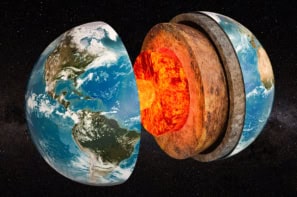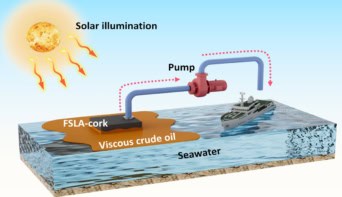
A pair of researchers in Australia claim to have the best evidence yet that the pronounced warming in the Arctic is due to the melting of sea ice in that region. They warn that this ice temperature feedback system makes the polar region susceptible to further rapid warming.
The rise in Arctic temperatures near the land surface has been nearly twice the global average in recent decades – a phenomenon known as “Arctic amplification”. Climate scientists had expected this general trend, knowing that the removal of sea ice would lead to the Arctic absorbing more solar radiation. This is because sea water is less reflective than ice.
In many climate models, however, these rapid temperature rises are also strongly influenced by changes higher up in the atmosphere – such as variation in cloud cover and water vapour. So it has been difficult to fully understand the contribution of melting sea ice. Much of the variation between models is because they use different data sets and they merge information in different ways.
Climate modellers gather climate measurements from a range of sources – weather stations, satellites, planes, etc – and feed these into forecasting programmes, which effectively “fill in the gaps”. The challenge is to find the most appropriate way to incorporate a mix of different observations, which combine atmospheric changes with conditions at the Earth’s surface. “Past efforts have encountered artificial trends that reflect changes in the umber and type of observations and not in the real climate,” says James Screen, a climate scientist at the University of Melbourne.
‘Re-analysis’
Screen, working with his Melbourne colleague Ian Simmonds, claims to offer a more accurate picture of the changing Arctic climate. The researchers took data from an international “re-analysis project” by the European Centre for Medium-Range Weather Forecasts (ECMWF), which has been collating Arctic climate data for the past 15 years. The project’s latest data set, used in this research, is supposed to be the most consistent to date, incorporating archived data not available in previous analyses.
Screen and Simmonds discovered that warming has been most significant in the lower atmosphere close to the sea surface. The finding led them to link the temperature rises with melting sea ice, rather than processes higher up in the atmosphere, which would trigger warming over a wider vertical region. “It was previously thought that loss of sea ice could cause further warming. Now we have confirmation this is already happening,” Screen tells physicsworld.com.
If the Australian research team is correct then this could leave the Arctic facing further climate amplification, with the melting sea ice and the rising temperatures locked in a feedback system. “The most immediate impacts are likely to be local, for example on Arctic ecosystems and the indigenous communities. In the longer term, if the current trends continue, there is the threat of increased melting of the Greenland ice sheet,” says Screen.
Not all bad?
Jeff Ridley, a climate scientist at the UK’s Met Office, agrees that Arctic sea ice is highly sensitive to rising atmospheric temperatures. “There is absolutely no doubt that increasing global temperatures will result in more Arctic ice melt, eventually with September becoming ice free,” he says.
Ridley is aware, however, of the problems in making firm conclusions about how the Arctic might respond in the future. “There is very considerable inter-decadal variability in the Arctic but the authors do a reasonable job with the length of re-analysis dataset available. The implications for Arctic ecosystems are not all negative, but there will be change,” he adds.
Screen and Simmonds intend to develop their research by looking more closely at the mechanisms by which diminishing sea ice might amplify Arctic temperature trends and to look at the causes of the reduction in sea ice itself.
This research is published in this week’s Nature.



